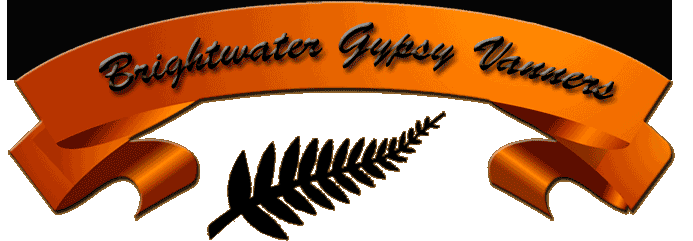
Care of our Horses
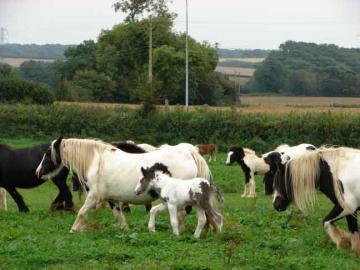
The gypsy vanner is one of the last breeds left in the world to be raised as close as possible as nature intended them to be. We owe that to the gypsies who bred these horses for generations and have given rise to a tough, durable, sensible, calm horse. They did not constantly use routine medical intervention as we are seeing in today’s domesticated horses. We here at Brightwater Gypsy Vanners feel obliged and privileged to continue this tradition and feel by doing so we hope to breed hardy horses like the gypsies of old did .
Above: One of Tom Price's herd. He has over a 1000 gypsy vanners and each herd runs together with one stallion.
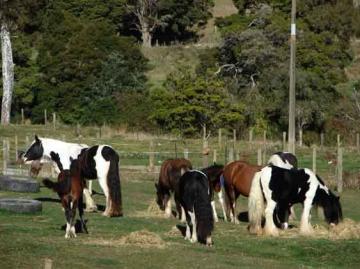
Much of the land is steep hill country and the foals are born and raised on these difficult contours. They become sure footed and sound very quickly and develop excellent muscle tone from the constant up and down the hills. Watching the herd literally run down the steep hills is impressive but more so impressive is watching a new born do the same thing!
The horses are left to run in their own herds and generally play their own mating game. So far every mare has conceived without fail. If given half the chance the stallions and mares know exactly what they are doing. We do not rug, stable or segregate our horses and they are left to roam in large hill paddocks getting a variety of feed and plenty of daily exercise. We feel this is a personal choice and respect others rights who use more modern methods of care or are not as fortunate as ourselves to own a large block of land.
The horses co-exist as closely as possible as nature intended, in a social environment with their own kind. NO stallion at Brightwater Gypsy Vanners is ever kept in isolation for the simple fact to become a breeding machine on command. We wonder why stallions are loco when taken to a mare in season and has given them a undeserving reputation as dangerous. In human prisons we segregate convicts in solitude for punishment as it has a severe debilitating affect. Can you imagine what it does to your horse’s psyche, who is a very social creature just like us. For most of us our stallions are providing us with an income, so please next time you think to segregate your stallion permanently, empathise to what you are doing. Just because it is the industry norm does not mean it is right.
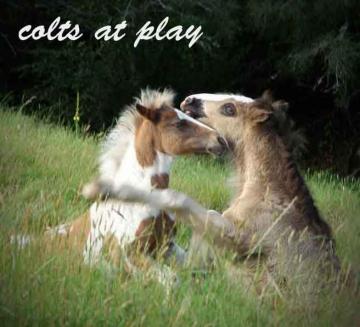
During the foaling season we again leave the mares to themselves. This is difficult at times as the urge to intervene is pressing, as it is natural to want to try and help at such a vulnerable time. But we asked ourselves why the mares go into hiding when they are ready to birth..... simple......they do not want us around. Some of ours will hide in the bush for a couple of days until the foal is stronger. In the last 5 years they have all given birth to healthy foals unassisted. We do not foal imprint as we have found it is not necessary for this breed. We allow mother and foal the time with each other to bond and only if the foal approaches us do we attempt any contact with it. We let the foal come to us on their own terms. Some come as early as 3 days and others can take over 5 months, but in the end once they realise that humans are good bum scratchers, they can not help themselves and are all over us. Sometimes the foal will be over 6 months before it is handled, but we have never found this to hinder their incredibly willing and easy natures. Many a visitors have wandered these hills and are amazed at how quiet and calm the so called wild foals are and their curiosity towards us humans. We do not force them to bend to our will and in time they see us as part of the herd, so they have little to fear.
All foals are weaned by their dams and if the mare is loosing weight we feed her more. By doing so we feel the foal is far more adjusted and secure once it leaves its dam. By trial and error we have found it better to take the mother out of the herd, that way the foal is left with all his familiar surroundings and pals which is far less traumatic to them.

Many ask us if we follow natural horsemanship techniques. We are not regimented into one technique or the other. There is good and bad in all and I like to think that we have taken the best of what is on offer. If it works, then go with it, it not, then modify it. In the end I do not call it English or Parelli, but just good old fashion common sense. For an excellent trainer and farrier who never gives up no matter how hard the job you can contact Craig Doty through myself. He is shown here pictured to the right getting Ziggy to perform for a photo shoot with the newspaper.
Alternative Medicine
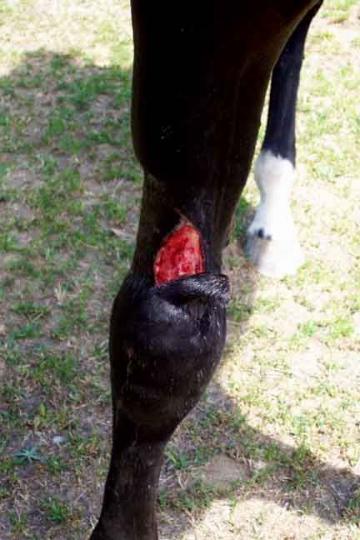
We practise alternate medicine and have had nothing but excellent results with large doses of Vitamin C, unprocessed raw honey and urine therapy on bacterial and viral infections and external wounds. Between those three remedies 99% of aliments are healed in an unobtrusive manner that supports the immune system rather than knocking it out first. In an age where penicillin is becoming less and less effective it is heartening to know that these three natural remedies work extremely well instead. If anyone is interested in these remedies we are happy to pass on our knowledge or if there is enough interest a forum could be started that is dedicated to natural healing methods. Please let us know if you would be interested in this idea.
Picture above: We are not sure how the mare did this injury. She came to us for servicing and already had an injury on her rear leg. Once the vet cut off the flap of skin we soaked it in urine for 3-4 weeks. It completely healed with no scarring and complete hair growth. Unfortunately I lost the after photo
We do not use vaccines and neither do most gypsy folks. Bold statement and I debated whether to include it, but have always felt that honesty is the best policy as we have nothing to hide and fully believe in what we are doing. In the past this admission has caused tempers to fly and one customer refused to purchase a dog from us believing that our animals were either sickly or we were trying to save money. On the contraire, it takes far more effort and responsibility to make conscious choices that you personally must seek out and research, than to give the supposed magic bullet and hope for the best. In the old days food supplies were far more unprocessed and raw but with the advent of commercialisation, GMO and the rest, one almost needs a PHD to make an intelligent choice in what to feed ourselves and animals. This choice was not a snap decision and like most others I believed that vaccines were beneficial at one time. It was not until the birth of my daughter, Seymour, back in 1992 (thank you for enlightening us) that I began to read up of the contraindications (reactions) to vaccines. The more I read the more I wanted to know about this most controversial and complicated subject. I read extensively for fours years, not only pro and anti vaccine books, but books on immunology, virology, pharmacology and the rest to understand this subject more wholly. It was an "informed choice" made from years of information and logic and not propagated by fear or ignorance that has surrounded this topic for decades. For 20 years now I have not used vaccines and am happy to say that for the most part ourselves and animals enjoy excellent health year round. Our non-existent vet doctor and almost non-existent vet bill is proof of that. If you feel strongly on this issue and would like your newly purchased Gypsy Vanner to be vaccinated for a particular disease we are happy to do this for you, as this is your personal choice. It is everybody's right to choose and we respect that.

This is Harley.....tough as nails this boy like his name.....for his full story please visit In Memory Of
.